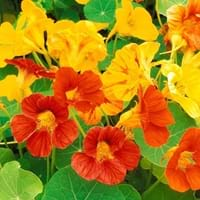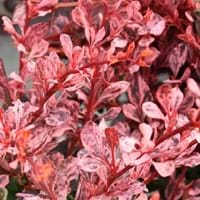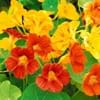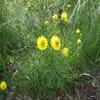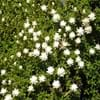Life Span
Annual
Perennial
Origin
South America
Eastern Asia, Japan
Types
Annuals
Not Available
Habitat
Cultivated Beds
Old fields, stream banks
USDA Hardiness Zone
8-11
4-8
Sunset Zone
A1, A2, A3, H1, H2, 1a, 1b, 2a, 2b, 3a, 3b, 4, 5, 6, 7, 8, 9, 10, 11, 12, 13, 14, 15, 16, 17, 18, 19, 20, 21, 22, 23, 24
A3, 2b, 3a, 3b, 4, 5, 6, 7, 8, 9, 10, 11, 12, 13, 14, 15, 16, 17, 18, 19, 20, 21, 22, 23, 24
Habit
Cushion/Mound-forming
Oval or Rounded
Flower Color
Yellow, Red, Orange
Yellow, Yellow green
Flower Color Modifier
Bicolor
Not Available
Fruit Color
Green, Tan
Red orange
Leaf Color in Spring
White, Light Green
Light Green
Leaf Color in Summer
White, Light Green
Green
Leaf Color in Fall
White, Light Green
Purple, Orange, Burgundy, Crimson
Leaf Color in Winter
Light Green
Not Available
Leaf Shape
Orbicular
Obovate
Plant Season
Spring, Summer
Spring, Summer, Fall, Winter
Sunlight
Full Sun, Partial Sun
Full Sun, Partial Sun
Type of Soil
Loam, Sand
Clay, Loam, Sand
The pH of Soil
Neutral
Acidic, Neutral, Alkaline
Soil Drainage
Well drained
Average
Bloom Time
Late Spring, Early Summer, Summer, Late Summer, Early Fall
Spring, Late Spring
Tolerances
Drought
Pollution, Drought, Salt, Soil Compaction
Where to Plant?
Container, Ground
Ground, Pot
How to Plant?
Seedlings
Seedlings
Plant Maintenance
Medium
Medium
Watering Requirements
Medium
Requires regular watering during dry weather
In Summer
Lots of watering
Lots of watering
In Spring
Moderate
Moderate
In Winter
Average Water
Average Water
Soil pH
Acidic, Alkaline, Neutral
Acidic, Neutral, Alkaline
Soil Type
Loamy, Sandy, Well drained
Clay, Loam, Sand
Soil Drainage Capacity
Well drained
Average
Sun Exposure
Full Sun
Full Sun, Partial Sun
Pruning
Remove damaged leaves, Remove dead branches, Remove dead leaves
Remove damaged leaves, Remove dead branches, Remove dead leaves
Fertilizers
All-Purpose Liquid Fertilizer
All-Purpose Liquid Fertilizer
Pests and Diseases
Red blotch
Red blotch, Sunken patches
Plant Tolerance
Drought
Drought
Flowers
Showy
Insignificant
Flower Petal Number
Single
Single
Foliage Texture
Medium
Medium
Foliage Sheen
Matte
Matte
Attracts
Hummingbirds, Butterflies
Birds
Allergy
Not Available
Not Available
Aesthetic Uses
Landscape Designing, Showy Purposes
Borders
Beauty Benefits
Not Available
Not Available
Environmental Uses
Air purification
Air purification
Medicinal Uses
Antibacterial, Antibiotic, Anti-fungal, Antiseptic, Depurative, Diuretic, Emmenagogue, Expectorant, Stimulates new cell growth
Anthelmintic, Antibacterial, Antiseptic, Cancer
Part of Plant Used
Flowers, Leaves
Fruits, Leaves
Other Uses
Oil is used as an industrial solvent, Used as an insecticide, Used As Food, Used as Ornamental plant
Used to make yellow dye
Used As Indoor Plant
Yes
No
Used As Outdoor Plant
Yes
Yes
Garden Design
Container, Groundcover
Edging, Foundation, Hedges, Mixed Border, Rock Garden, Wall
Botanical Name
TROPAEOLUM majus
BERBERIS thunbergii
Common Name
Indian Cress, Nasturtium
Japanese Barberry
In Hindi
Tropaeolum majus
Japanese Barberry
In German
Tropaeolum majus
Thunberg-Berberitze
In French
Tropaeolum majus
Berberis thunbergii
In Spanish
Tropaeolum majus
Berberis thunbergii
In Greek
Tropaeolum majus
Japanese Barberry
In Portuguese
Tropaeolum majus
Japanese Barberry
In Polish
nasturcja większa
Berberys Thunberga
In Latin
Tropaeolum majus
Japanese Barberry
Phylum
Magnoliophyta
Magnoliophyta
Class
Magnoliopsida
Magnoliopsida
Order
Brassicales
Ranunculales
Family
Tropaeolaceae
Berberidaceae
Genus
Tropaeolum
Berberis
Clade
Angiosperms, Eudicots, Rosids
Angiosperms, Eudicots
Tribe
Not Available
Not Available
Subfamily
Not Available
Not Available
Number of Species
Not Available
Importance of Nasturtium and Rose Glow Barberry
Want to have the most appropriate plant for your garden? You might want to know the importance of Nasturtium and Rose Glow Barberry. Basically, these two plants vary in many aspects. Compare Nasturtium and Rose Glow Barberry as they differ in many characteristics such as their life, care, benefits, facts, etc. Every gardener must at least have the slightest clue about the plants he wants to plant in his garden. Compare their benefits, which differ in many ways like facts and uses. The medicinal use of Nasturtium is Antibacterial, Antibiotic, Anti-fungal, Antiseptic, Depurative, Diuretic, Emmenagogue, Expectorant and Stimulates new cell growth whereas of Rose Glow Barberry is Anthelmintic, Antibacterial, Antiseptic and Cancer. Nasturtium has beauty benefits as follows: Not Available while Rose Glow Barberry has beauty benefits as follows: Not Available.
Compare Facts of Nasturtium vs Rose Glow Barberry
How to choose the best garden plant for your garden depending upon its facts? Here garden plant comparison will help you to solve this query. Compare the facts of Nasturtium vs Rose Glow Barberry and know which one to choose. As garden plants have benefits and other uses, allergy is also a major drawback of plants for some people. Allergic reactions of Nasturtium are Not Available whereas of Rose Glow Barberry have Not Available respectively. Having a fruit bearing plant in your garden can be a plus point of your garden. Nasturtium has no showy fruits and Rose Glow Barberry has showy fruits. Also Nasturtium is not flowering and Rose Glow Barberry is not flowering . You can compare Nasturtium and Rose Glow Barberry facts and facts of other plants too.
